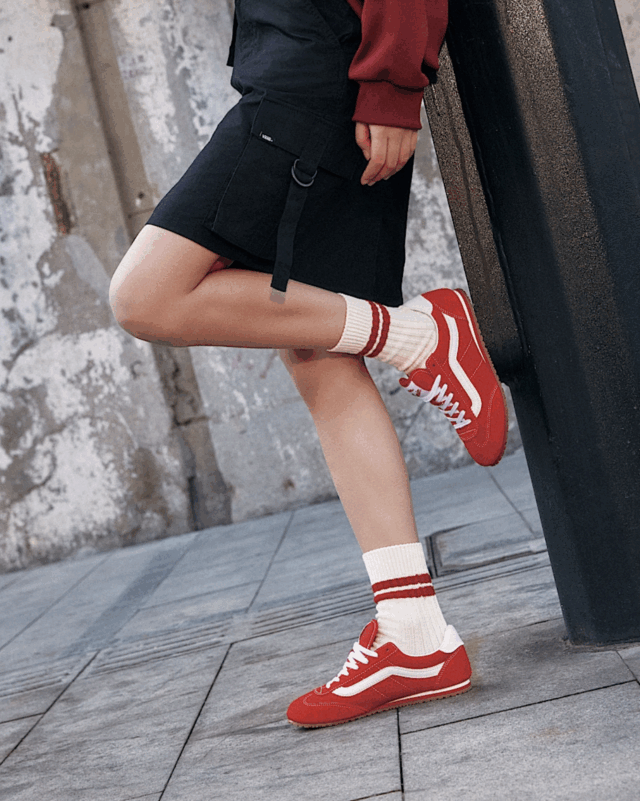
Retail operator VF Corp. says turnaround efforts at Costa Mesa-based Vans weren’t visible during the company’s latest earnings. But a turnround is imminent.
“You don’t see the results just yet numerically, but you will,” CEO Bracken Darrell told investors May 21. “And when you do, they’ll be high quality.”
Vans reported a 22% drop in fiscal fourth quarter sales to $493 million, compared to an 8% decline in the prior third quarter. The decline dragged down the company’s overall sales, which fell 5% to $2.1 billion.
Darrell told analysts on the May 21 call that if VF Corp. excluded results from Vans, sales would be up 4% for the quarter.
“This quarter’s setback doesn’t tell the whole story,” Darrell said, explaining that 60% of Vans’ quarterly decline was due to deliberate actions taken to “eliminate unprofitable” parts of the business, including closing stores and reducing inventory in China.
Darrell noted that VF closed the highest number of retail doors for Vans during its fourth quarter and the closures will slow down going into the next fiscal year with impacts from all turnaround efforts expected to wrap up by the fourth quarter of next year.
Vans’ direct-to-consumer channel remained challenged during the fourth quarter, with not enough traffic in stores and online, while sales of new footwear were growing, VF said.
The local skate apparel and shoes firm in March introduced a new shoe line called Super Low Pro, saying it had a high demand among a certain demographics, according to Vans.
The product was bought disproportionately by young women with the top two styles selling out early—“a signal that when we have something new and on trend, girls and women will come back,” Darrell said.
This also involves “channel cleanup”—“making the hard choices to make sure we have the right places to distribute, that we’re not dragging along unprofitable stores and then profitable value channels,” Darrell said.
He told analysts that VF had cut Vans’ locations aggressively. Store count was down 8% year-over-year.
This and a major shift away from discount stores—Vans exited 1,800 value doors while adding 800 non-value doors in the past year—has helped with gross margin improvement as well.
In the trading session after the results were announced, shares of VF dropped 16% to $12.15 apiece. By press time, the shares had climbed to $13.18 and a $5.1 billion market cap (NYSE: VFC).
New Products with Stronger Marketing
Darrell told analysts he remains confident in Vans’ outlook thanks to a new game plan by Sun Choe, named global brand president last July.
Her turnaround plan includes claiming other action sports categories, recapturing youth and women consumers, reconnecting with specialty skate shops and building up Vans’ athlete partnerships.
“The brand wandered away in pursuit of chasing trends at the expense of core consumer focus…We expanded into value channels and devalued the brand itself,” Choe said. “It was a mistake, and we’re fixing it.”
Choe, who was chief product officer at Lululemon for seven years, will be prioritizing footwear first and apparel second.
“She’s a product person through and through, and product is the most important thing we can do on the Vans brand. We’re systematically going to continue to roll out new products this quarter,” Darrell said.
The new assortment that Choe and her team are developing paired with a stronger marketing program is “the medicine” to get traffic back up as well, the CEO said.
The company is also downsizing. In late April, VF Corp. said it would be laying off 82 workers at its Costa Mesa headquarters effective June 29. The cuts are part of 400 company-wide layoffs announced by VF, which also owns Dickies, The North Face and Timberland.
Sales at Dickies, which is scheduled to relocate its headquarters from Texas to Costa Mesa last month, were down 14% for the quarter.
